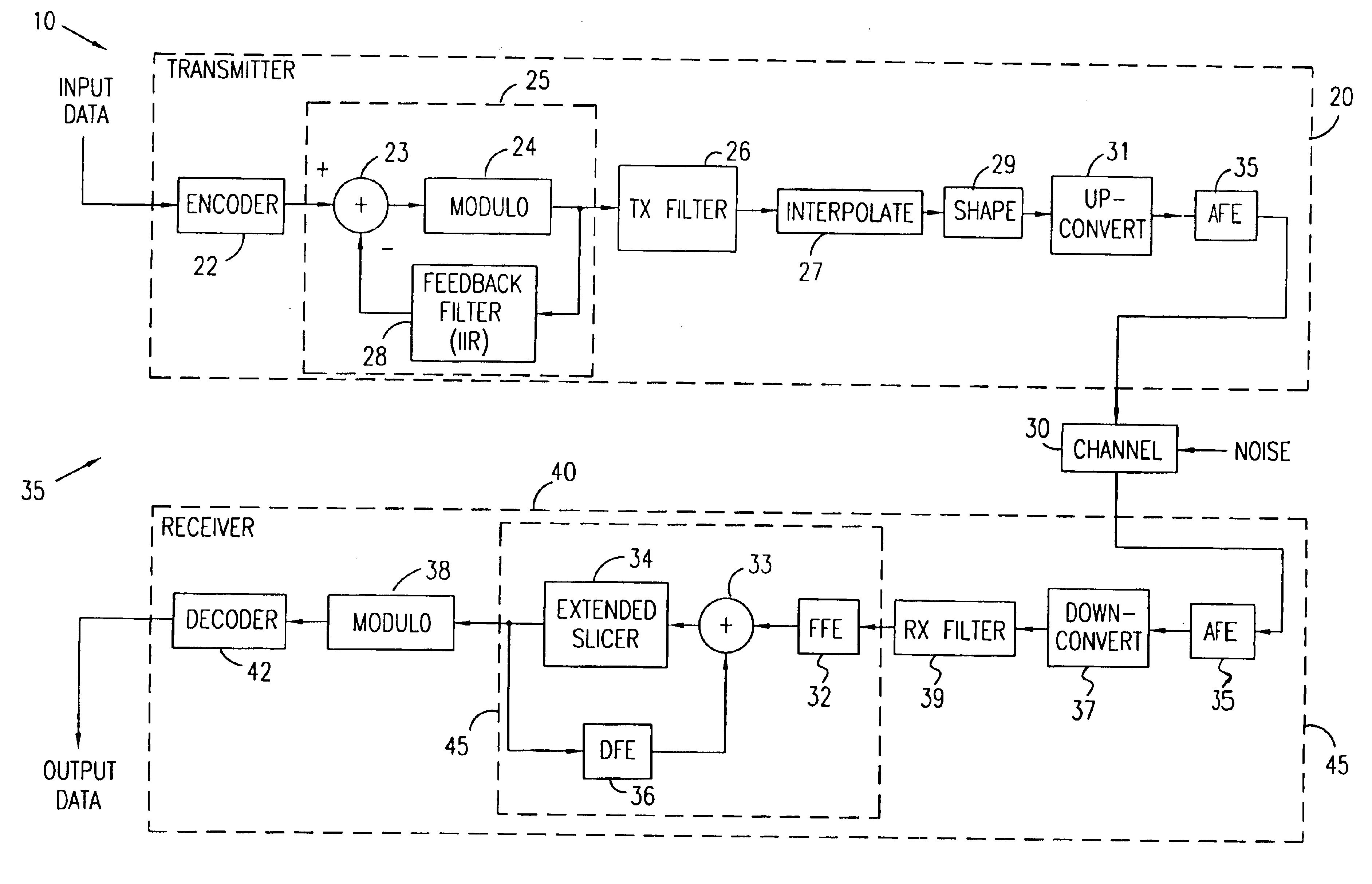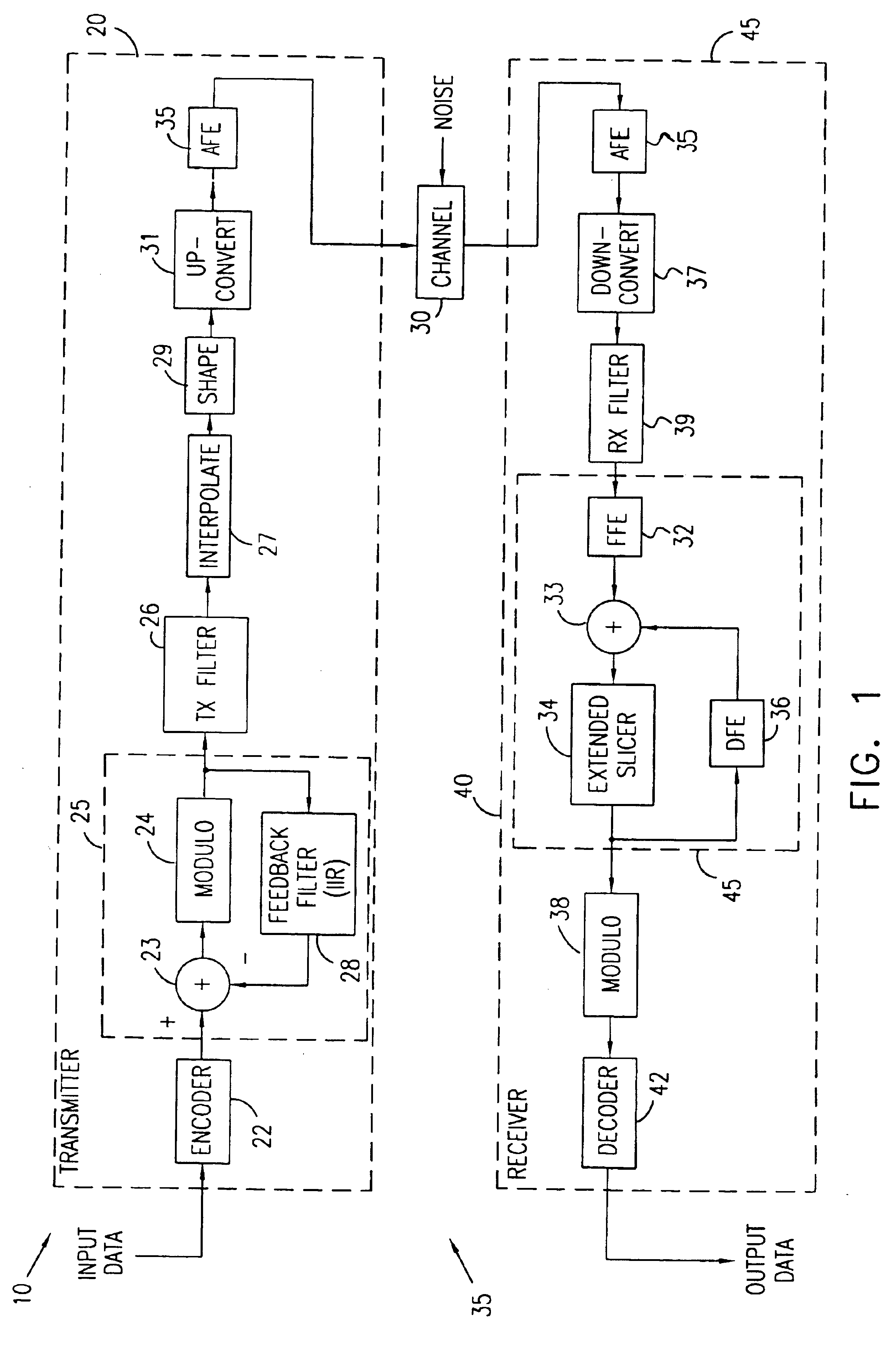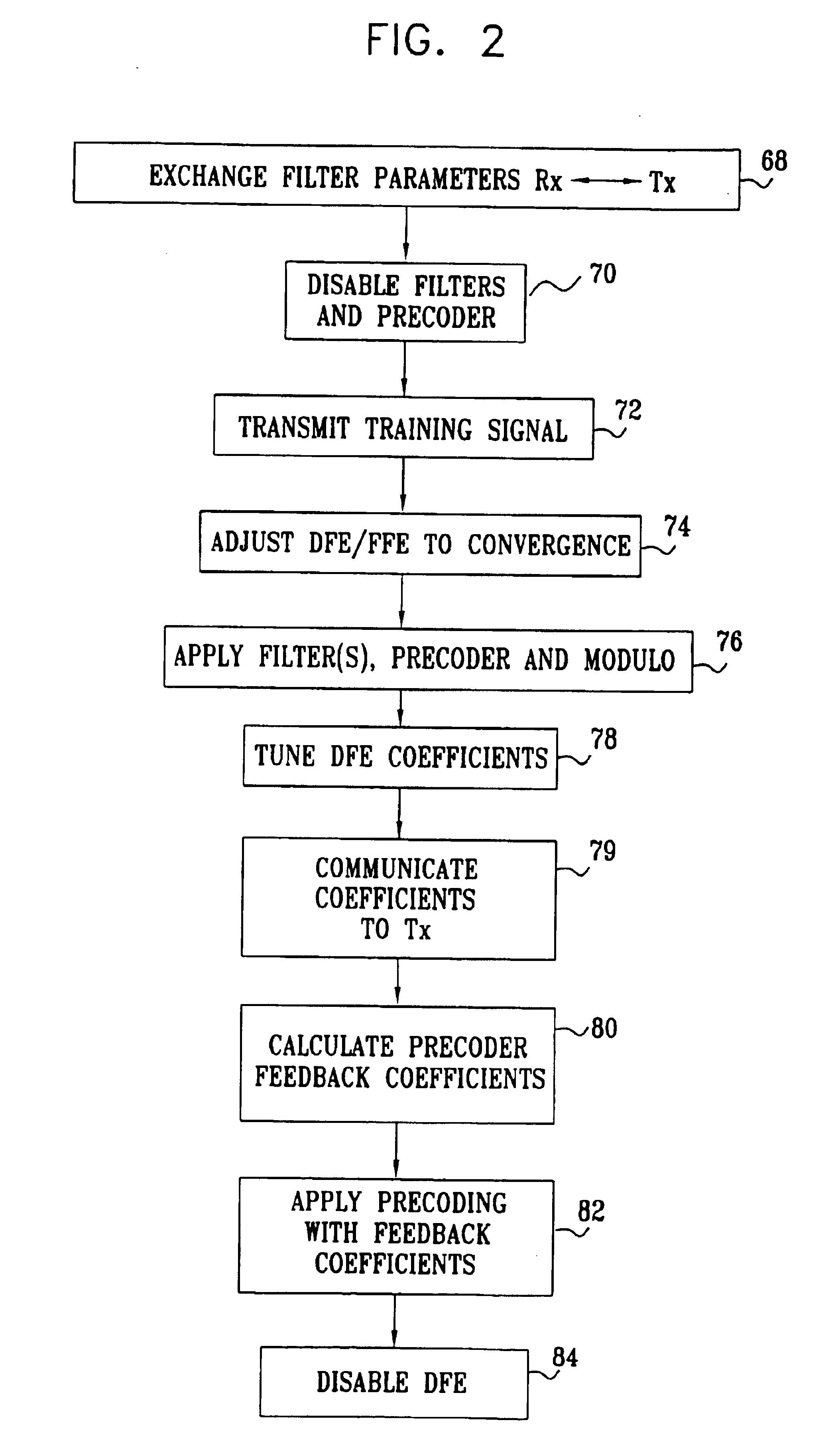Data transceiver with filtering and precoding
a data transceiver and precoding technology, applied in the field of high-speed data communication, can solve the problems of serious interference with amateur radio transmissions, dsl transmission channels are often subject to severe inter-symbol interference, and substantial amount of radio-frequency radiation, so as to reduce the sensitivity to error propagation, eliminate deleterious effects, and efficiently precode signals
- Summary
- Abstract
- Description
- Claims
- Application Information
AI Technical Summary
Benefits of technology
Problems solved by technology
Method used
Image
Examples
Embodiment Construction
FIG. 1 is a block diagram that schematically illustrates a system 10 for high-speed data communications, in accordance with a preferred embodiment of the present invention. The system comprises a transmitter 20 and a receiver 40, linked by a communication channel 30. Preferably, system 10 is a VDSL system, although the principles embodied in the system are similarly applicable to communications in accordance with other standards.
Transmitter 20 comprises a data encoder 22, which receives a stream of digital input data samples from a data source, and generates a corresponding sequence of QAM symbols. Encoder 22 may apply substantially any suitable modulation scheme known in the art, including both coded and uncoded schemes.
The symbols generated by encoder 22 are input to a Tomlinson-Harashima precoder 25, which precodes the symbols. Precoder 25 comprises a modulo device 24 and a feedback filter 28. The modulo device preferably operates generally as described in the above-mentioned art...
PUM
 Login to View More
Login to View More Abstract
Description
Claims
Application Information
 Login to View More
Login to View More - R&D
- Intellectual Property
- Life Sciences
- Materials
- Tech Scout
- Unparalleled Data Quality
- Higher Quality Content
- 60% Fewer Hallucinations
Browse by: Latest US Patents, China's latest patents, Technical Efficacy Thesaurus, Application Domain, Technology Topic, Popular Technical Reports.
© 2025 PatSnap. All rights reserved.Legal|Privacy policy|Modern Slavery Act Transparency Statement|Sitemap|About US| Contact US: help@patsnap.com



